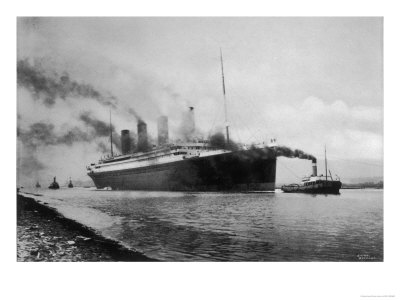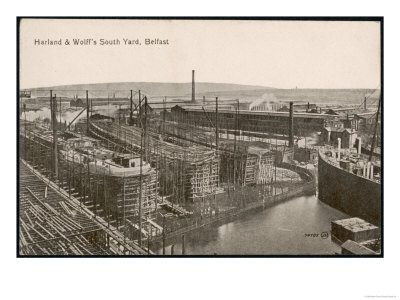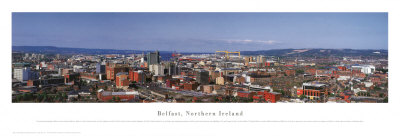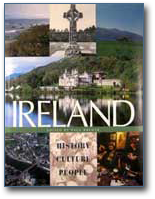The Titanic and Ireland
 |
The history of the Titanic and Ireland begins in 1911 with the ship's construction at the Harland and Wolff Shipyards in Belfast, Northern Ireland. She was built in the Belfast shipyard alongside her sister ship, the Olympic. The White Star Line owned the ship and intended to carry trans-atlantic traffic between Europe and America. Even though the Titanic sank almost 100 years ago, it continues to fascinate generations of readers, film makers, scientists and historians. The newspapers in Belfast carried reports on the progress of the construction, including the arrival of the largest anchor in the world. They used only superlatives in their descriptions of the world's largest ship but neither the owners nor the builders ever publicly stated that it was unsinkable.
Newspaper notices in May 1911 invited the public to view the completed liner before the launch on May 31, 1911. Leaving from Belfast, Titanic successfully completed sea trials in Belfast Lough during 1912. Hundreds of Belfast men had taken part in the construction of the luxury liner, and there were Irish passengers and crew on board during the maiden voyage. Needless to say, the city was deeply attached to the Titanic.
 |
Titanic was a magnificent ship with some of the rooms containing fireplaces that burned coal and gigantic beds in the bedrooms. Five hundred foot promenades revealed the sheer scale of the vessel. With a maximum capacity of over 3200 passengers and crew, the ship was equipped with only 16 lifeboats and a handful of life rafts. Only about one third of the people aboard would have fit into these crafts. The cost of passage was between 870 pounds and 2 pounds, so the majority of the passengers chose the third class fare. The captain on the maiden voyage was E.J. Smith who had sailed over two million miles for The White Star Line. This voyage on the Titanic was to have been his last voyage before retirement.
One hundred twenty-three Irish men, women and children boarded the Titanic at Cobh, or Queenstown, County Cork. Most of them were embarking on a new life in America. On April 14, 1912, the ship collided with an iceberg and sank, with the loss of over a thousand lives. The building and launch of the luxury liner had already made world headlines as being unsinkable and the largest, the fastest, the finest and the most luxurious liner in the world. No one expected this and, when the reports circulated around the world, people were shocked.
 |
Belfast's attachment to the ship has never diminished. A statue was erected on the grounds of the Belfast City Hall, commemorating the Titanic dead. Belfast mourned a personal loss and grieved for the dead they knew and the dead they had never known. The people of Cobh, County Cork also erected a memorial to the Irish victims of the voyage. It was unveiled in 1998 by Liam Birke, who was the nephew of one of the deceased passengers, Jeremiah Burke. The monument also features the Rice family, all six of whom perished, along with seventy other passengers who boarded the ship at Cobh.
Disclaimer: LittleShamrocks.com is an affiliate website that receives commissions from sales of the products listed. We have purchased and sampled many, but not all, of the products on these pages.
© Copyright LittleShamrocks.com. All Rights Reserved.








